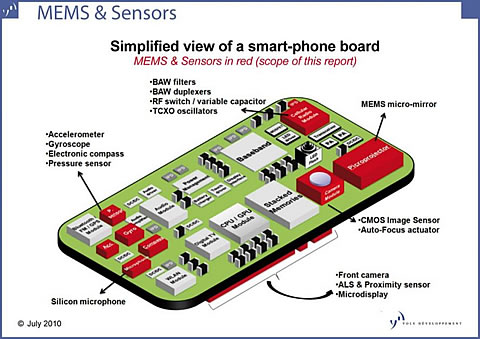Prolific Mobile Phones & Portable Devices Driver
- Prolific Mobile Phones & Portable Devices Driver Wireless
- Prolific Mobile Phones & Portable Devices Driver Download
- A PopSocket gives you a better grip so holding your phone is much easier and it makes taking selfies effortless without worry about dropping your device. Chargers Having a charger is an essential part of having a phone.
- Please contact us telling us the phone number that you would like to verify, as well as the reason for deleting your previous account. My account is verified, but it keeps telling me to verify; Try verifying your cash out email address on your account page, as well as your main email address and phone number. No Places on Studies.
Control your projects from one simple interface. Use your cell phone from m.Prolific.com.
Abstract
Purpose
–The study seeks to further explore the hypothesised link between the increase in mobile phone ownership and use and the reported decline in adolescent smoking. Evidence for the link was gathered by examining perceptions of mobile phone use in the context of social identity and adolescent smoking.
Design/methodology/approach
–The study developed and employed a questionnaire‐based survey design asking a sample of student participants to characterise mobile phone users using a semantic differential scale. Data were also collected in relation to individual levels and patterns of mobile phone usage. The sample consisted of 172 undergraduate students studying in the Faculty of Health based in a UK university.
Findings
–Findings show first that mobile phone use is associated with a number of positive, desirable personal and social attributes relating to concepts of social identity and image formation, and that many of the attributes associated with mobile phone use are those commonly associated with smoking behaviour.
Research limitations/implications
–The association between mobile phone use and social identity theory provides a theoretical framework which helps explain the prolific rise in mobile phone use and can be used to support the viability of a link between a decline in levels of adolescent smoking and a rise in mobile phone ownership. Further evidence needs to be gathered which examines both behaviours in a single cohort of adolescents to establish the direct impact of mobile phone use on smoking behaviour in this particular group.
Practical implications
–Mobile phone use may serve as a displacement behaviour for smoking in adolescents and may provide an example of a positive – as opposed to a negative – addiction, given that it is a potential alternative to smoking in adolescents.
Originality/value
–The paper provides an examination of the health implications of a modern‐day social phenomenon. It draws on and draws together established theory and empirical work to further advance a previously proposed link between smoking and mobile phone use. Establishing such a link has important implications for health education and promotion activities.
Keywords
Citation
Cassidy, S. (2006), 'Using social identity to explore the link between a decline in adolescent smoking and an increase in mobile phone use', Health Education, Vol. 106 No. 3, pp. 238-250. https://doi.org/10.1108/09654280610658578
Download as .RISPublisher
:Emerald Group Publishing Limited
Copyright © 2006, Emerald Group Publishing Limited
Abstract
Purpose
–The study seeks to further explore the hypothesised link between the increase in mobile phone ownership and use and the reported decline in adolescent smoking. Evidence for the link was gathered by examining perceptions of mobile phone use in the context of social identity and adolescent smoking.
Design/methodology/approach
 –
– The study developed and employed a questionnaire‐based survey design asking a sample of student participants to characterise mobile phone users using a semantic differential scale. Data were also collected in relation to individual levels and patterns of mobile phone usage. The sample consisted of 172 undergraduate students studying in the Faculty of Health based in a UK university.
Findings
–Findings show first that mobile phone use is associated with a number of positive, desirable personal and social attributes relating to concepts of social identity and image formation, and that many of the attributes associated with mobile phone use are those commonly associated with smoking behaviour.
Research limitations/implications
–The association between mobile phone use and social identity theory provides a theoretical framework which helps explain the prolific rise in mobile phone use and can be used to support the viability of a link between a decline in levels of adolescent smoking and a rise in mobile phone ownership. Further evidence needs to be gathered which examines both behaviours in a single cohort of adolescents to establish the direct impact of mobile phone use on smoking behaviour in this particular group.
Practical implications
–Mobile phone use may serve as a displacement behaviour for smoking in adolescents and may provide an example of a positive – as opposed to a negative – addiction, given that it is a potential alternative to smoking in adolescents.
Originality/value
–The paper provides an examination of the health implications of a modern‐day social phenomenon. It draws on and draws together established theory and empirical work to further advance a previously proposed link between smoking and mobile phone use. Establishing such a link has important implications for health education and promotion activities.
Keywords
Citation
Prolific Mobile Phones & Portable Devices Driver Wireless
Cassidy, S. (2006), 'Using social identity to explore the link between a decline in adolescent smoking and an increase in mobile phone use', Health Education, Vol. 106 No. 3, pp. 238-250. https://doi.org/10.1108/09654280610658578
Download as .RISProlific Mobile Phones & Portable Devices Driver Download
Publisher
:Emerald Group Publishing Limited
Copyright © 2006, Emerald Group Publishing Limited
